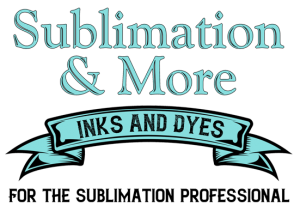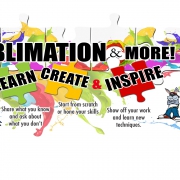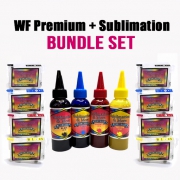We are frequently asked which software is best for sublimation. If you don’t know, there are two basic types of design software, vector and raster (or bitmap). Vector is what’s used for cutters or plotters. A vector design is made up of mathematical formulae that define the points, curves, angles, etc. of each design. Because of that, it can be resized without loss of resolution. But also because of that, pure vector does not do continuous blends and color transitions. Vectors of photographs look more like cartoons. A raster, or bitmap, image is best equated to a photograph. A photo is a raster image. It’s made up of dots in a grid. As you increase the size, the dots move further apart. That’s what reduces the quality of the image when you resize. The software will interpolate the missing data, but the guessing creates fuzziness.
Which Type of Software is Best?
For the general creation of designs for sublimation I think that vector software is preferable. I know many people jump to PhotoShop, and it’s a great program. But it’s a raster edit and photo manipulation program. That doesn’t mean you can’t do other things with it, it’s just not the best choice for the kind of design and layout work most people do for sublimation design. (And if you are also outputting to send to a vinyl cutter it’s a really poor choice.) It makes dealing with text and editing text a more complicated, multistep process than it needs to be, and resizing, changing paper size, and all manner of other things are more complicated. (Again, it can be done, but if you are looking for a new program then there are better choices.)
What about Silhouette Studio?
Because of the popularity of the Silhouette Cameos many people use Silhouette Studio and then transition to it for sublimation. Let me say that I have always liked Silhouette Studio. It’s a surprisingly powerful program which I still use for things like the warp panel (in BE). That said, it is written to support their line of cutters. It is not written to be a full fledged design program for printing. It is not ICC aware, and without ICC profiles it is impossible to get truly accurate color. It also does not have any raster features, so you cannot do effective blends, smudges, smears- things that can enhance a sublimation print.
What Are The Other Options?
Personally I can’t imagine not having both a vector and raster edit program, but if I had to only choose one it would be vector, hands down. Most vector programs have enough raster editing features to get you through, anyway. Photo editing programs do not have strong vector features. So, which is a vector program?
Adobe’s main programs are subscription based. If you are committed to giving Adobe money every month, Adobe Illustrator is the one for you.
If you want to buy a comprehensive suite with everything included – vector, raster, font manager, and a pile of fonts and clip art- I can’t recommend CorelDraw highly enough. I’ve used almost everything and it’s my favorite.
If you’re on a budget or just starting out, or looking for a step up from the bundled program with your vinyl cutter, you can’t go wrong with Affinity Designer. It’s what I recommend to most people because it’s a solid, pro-level program that is ICC and there is no subscription. It’s a flat out $50. In my opinion there is no better deal out there. Affinity also has Photo, which is (surprise) their photo editing and bitmap program. You can find a lot of reviews comparing it favorably to PhotoShop, and there are many videos and tutorials on both programs. Affinity Designer also has a raster module that lets you really up your design abilities.
Are These Programs Easy to Learn?
Whichever program you choose there is going to be a learning curve. You’re going to be irritated and frustrated and complain that it’s too difficult compared to what you’re used to. You’ll master it with time and practice, and once you learn any high end program the others will come easily. I’m a longtime CorelDraw user and it’s my favorite, but put me in front of Illustrator or Designer and I can get work done.


